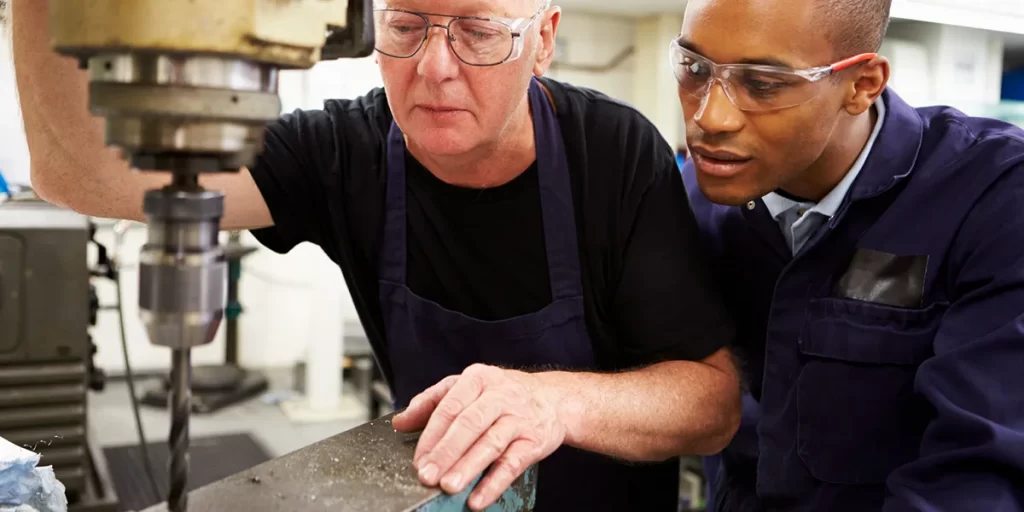
One of the most common challenges for leaders and managers in the workplace is the generational differences in culture.
As the workforce continues to shift and change, the gap between the generations becomes bigger. As more and more Millennial employees enter the workforce, they are expected to become half of the working population by the end of 2020.
The workforce keeps shifting as Baby Boomers retire and more and more Millennials and Gen Zs join the workforce. There are major differences between each generation and their ideal work culture. With the vast age differences in today’s employees, firms need to find ways to bridge the generational gap or risk losing their competitive advantage.
The Working Generations
Currently, the workforce consists of five generations:
SILENT (1925 – 1946)
2% of the workforce. Their view of life was formed by events like The Great Depression, the second World War, and also the postwar boom. They tend to exhibit a determined, “never give up” attitude, and they value communication, teamwork, and collaboration.
BOOMER (1946 – 1964)
29% of the workforce. This number is in decline every day. This generation came of age during the Vietnam War, civil rights, and Woodstock. They are typically ambitious, and they can be workaholics.
GENERATION X (1965 – 1980)
34% of the workforce. This number is not likely to increase again. This generation is often known as the “slacker” generation. They tend to value work/life balance more than the workaholic Boomers. They value independence and adaptability.
MILLENNIALS (1980 – 1995)
34% of the workforce. This number is expected to increase to 50% by the end of 2020. Millennials appreciate inclusion and diversity more than previous generations. They are also generally good at multitasking as their parents involved them in a bunch of activities when they were in school.
GEN Z (1995 – 2016)
1% of the workforce. This number is expected to increase to 20% by the end of 2020. They have a major aptitude for technology and multitasking, and they tend to be entrepreneurial self-starters. They tend to expect to be able to work remotely.
Boomers
Boomers
Generation X
Generation X
Millennials
Millennials
Generation Z
Generation Z
When it comes to bridging the generational gap in the workplace, your work culture needs to be at the center of the conversation. You need to make sure that your culture is attracting workers of all generations.
Why is Culture Important?
Work culture is the systems, beliefs, and values that can either make a company a great place to work or a toxic place to work. It has an impact on the communication between leaders and employees. Culture is important for a good portion of the workforce. Millennials, for example, value culture more than pay.
When a company has a positive work culture, the employees will be happier. Happier employees who actually want to come to work tend to get more done and work more efficiently. According to FastCompany.com, happy workers are 12% more productive. Workers will also be more collaborative and get to know their co-workers more if the culture is positive.
A positive work culture also leads to more employee retention and less turnover. It could even be argued that culture fit is the most critical aspect of employee retention. Studies show that employees who do fit in well with their companies, co-workers, and supervisors had much greater job satisfaction and were less likely to leave their positions.
One of the best ways to hold a competitive edge over other companies in your niche is to be a place where people want to work. Everyone is familiar with positive work cultures in companies like Apple and Google. There is a reason why so many people want to work with these companies. If you take the time to improve your company’s culture, you will be more productive and more profitable.
There are generational differences in ideal work culture, however. So how can you determine which generation to focus on when improving your work culture? Actually, your main goal should be bridging the generational gap.
How to Bridge the Generational Gap
The first thing you want to do when bridging the generational gap is focus on the commonalities. For example, all generations tend to value:
- Family
- Work/life balance
- Being appreciated and recognized by supervisors
- Effective leadership
- Flexible work situations
- Having a say when decisions are made
- Financial rewards
- A sense of purpose
Aside from focusing on what we all have in common, there are a few other things you can do to improve the work culture for employees of all generations.
1.
DON’T FORCE ALL GENERATIONS INTO THE SAME PARADIGM
2.
ENCOURAGE MANY COMMUNICATION METHODS
3.
ADJUST YOUR FEEDBACK
If you are trying to bridge the generational gap and improve the culture in your workplace, Powers can help. Powers gives leadership both the process and platform to implement the desired management behaviors that deliver on the corporate values and culture. It is uniquely designed to overcome the cultural gap by establishing the cultural connections where the right management behaviors, communications, and interactions occur to deliver strong engagement, trust, and respect, resulting in better operational results. To learn more, please visit our page on operational culture.

